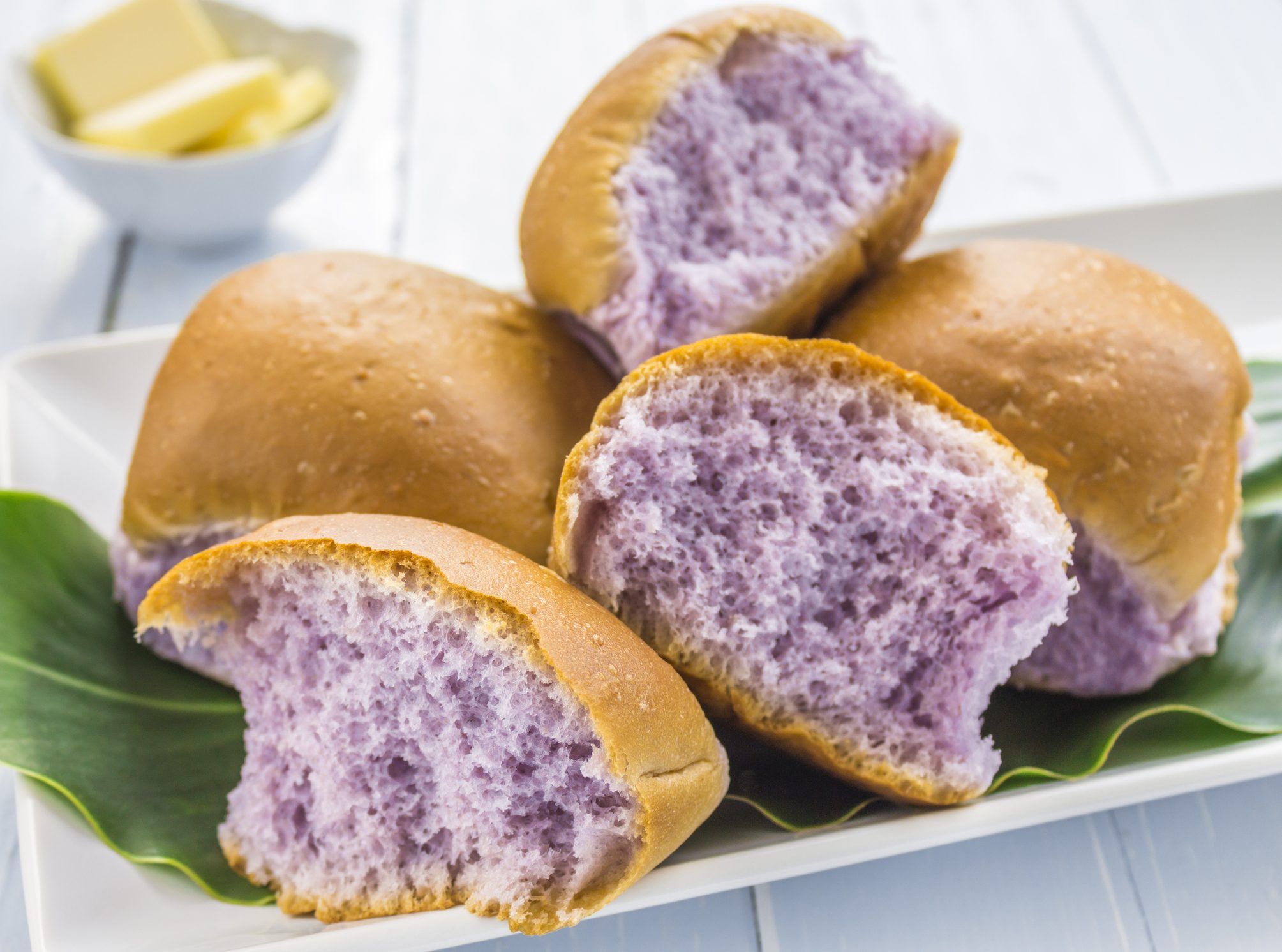7 Benefits of Purple Yam (Ube), and How it Differs from Taro
Purple yams are full of vitamins, minerals, and antioxidants which may benefit your health – here’s 7 ways they are good for you.
;Resize,width=742;)
This bright purple root vegetable is also known as violet yam, or water yam, and it is often confused with taro root.
They have a sweet, nutty flavor, and become soft like a potato when cooked. It’s a staple of the Philippines, but is now enjoyed all over the world.
Purple yams are full of vitamins, minerals, and antioxidants which may benefit your health – here’s 7 ways they are good for you:
1. Full of Nutrients

100 grams of cooked purple yams only has 140 calories, but it has 4 grams of fiber, and contains sodium, potassium, calcium, iron, vitamin C, and vitamin A.
They also contain plant compounds like anthocyanins, which give them their bright color. Anthocyanins have been shown to reduce blood pressure and inflammation, and could protect against cancer and type 2 diabetes.
They are rich in vitamin C, which is needed to keep your cells healthy and protect your DNA from damage.
2. High in Antioxidants

Purple yams are full of antioxidants which help to protect your cells from damage by harmful free radical molecules.
Free radicals are linked to conditions like cancer, heart disease, diabetes, and neurodegenerative disorders.
The anthocyanins in purple yams are a type of polyphenol antioxidant, and regularly consuming fruits rich in polyphenols has been linked to a lower risk of certain types of cancer.
Two anthocyanins in purple yams – cyanidin and peonidin – could reduce growth of some cancers, including colon cancer, lung cancer, and prostate cancer. Studies using concentrated amounts of cyanidin and peonidin showed that they slowed the growth or reduced the number of human cancer cells.
3. Could Help Regulate Blood Sugar

Flavonoids in purple yams could help lower blood sugar in type 2 diabetes. They do that by reducing oxidative stress and insulin resistance through protecting insulin-producing cells in the liver.
One study of 20 rats showed that giving them higher amounts of purple yam extract lowered their appetite, encouraged weight loss, and improved their blood sugar control.
This is probably due partly to purple yams having a low glycemic index number. The index, which ranges from 0-100, is a measure of how fast sugars are absorbed into your bloodstream.
Purple yams have a GI of 24, meaning that carbs are broken down slowly in a steady release of energy.
4. Could Lower Blood Pressure

Purple yams could help lower blood pressure, likely due to their high antioxidant content.
One test-tube study showed that purple yams have antioxidants that may help lower blood pressure in a similar way to that of blood-pressure medications (ACE inhibitors).
Most of the studies have been done in test-tubes so far, so more human research on this is needed before a conclusion can be made.
5. May Ease Asthma Symptoms

Asthma is a chronic inflammatory disease of the airways, and research suggests that the vitamins A and C in purple yams could help people reach the recommended daily intake.
This is important, as one review of 40 studies found that asthma in adults was associated with low vitamin A intake – those with asthma were only getting about 50% of the recommended daily intake on average.
The review also found that the occurrence of asthma increased by 12% in those who had a low dietary intake of vitamin C.
6. Could Improve Gut Health

Purple yams could help the good gut bacteria in your digestive system. They are full of complex carbs, and resistant starch (a type of starch resistant to digestion).
A test-tube study showed that the resistant starch from purple yams increased the number of beneficial Bifidobacterium in a simulated large bowel environment.
These bacteria may help reduce your risk of conditions such as colorectal cancer, inflammatory bowel disease, and irritable bowel syndrome. They also produce healthy fatty acids and B vitamins.
7. Useful Ingredient

Purple yams can be boiled, mashed, fried, or baked – much like a potato. They can be used in stews, stir-fries, and soups, and in the Philippines, they are often made into a flour called ube, which is often used in desserts.
Ube can be processed into a powder that is used to create vibrant colors in foods like candy, rice, cakes, desserts, and jams.
Purple Yams and Taro Root
Taro root is a root vegetable that varies in color from white to lavender, and has a mild, sweet taste.
Purple yams and taro root look very similar, which is why they are often confused. However, when the skins are removed, they are different colors.
;Resize,width=767;)
;Resize,width=712;)
;Resize,width=712;)
;Resize,width=712;)
